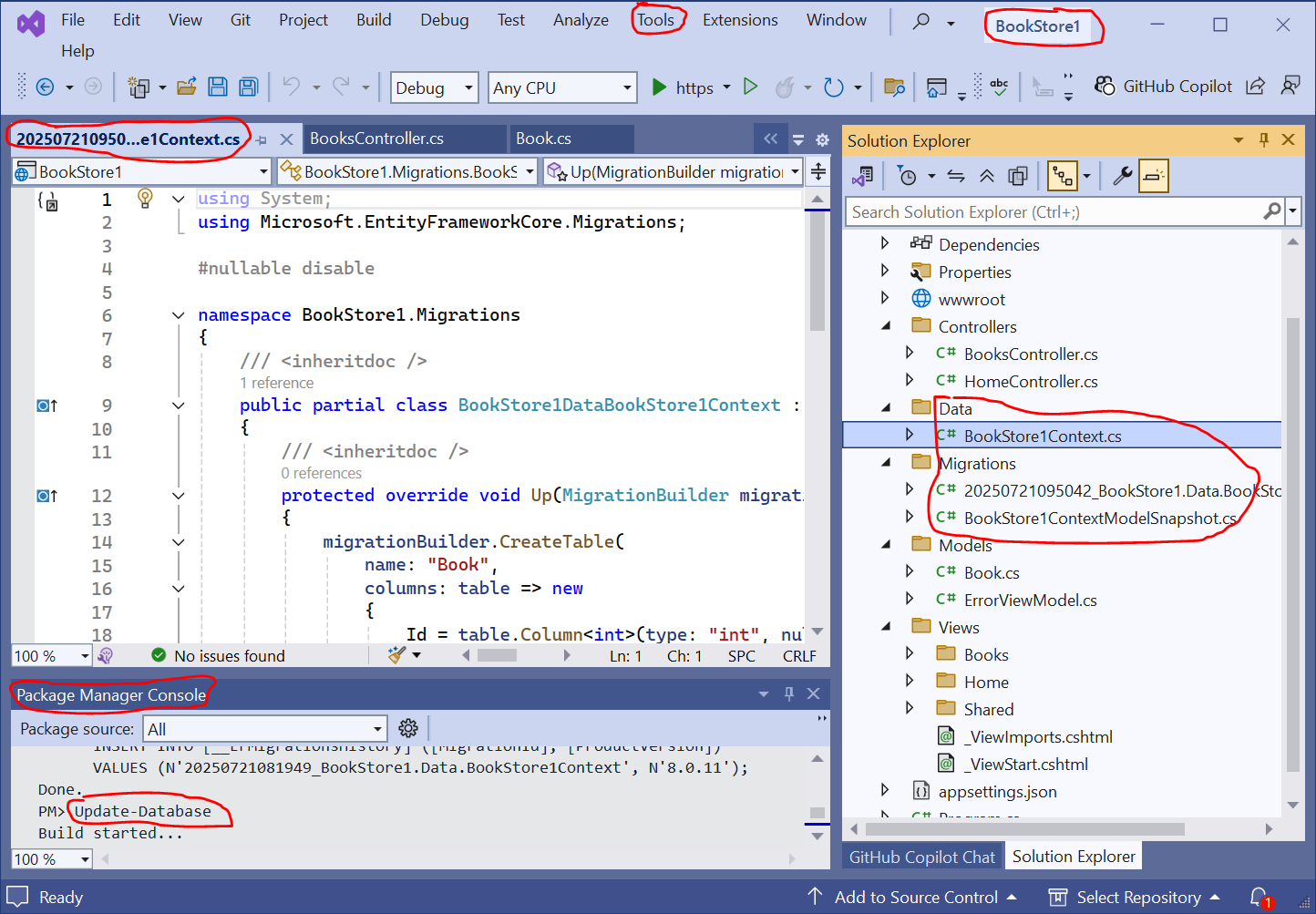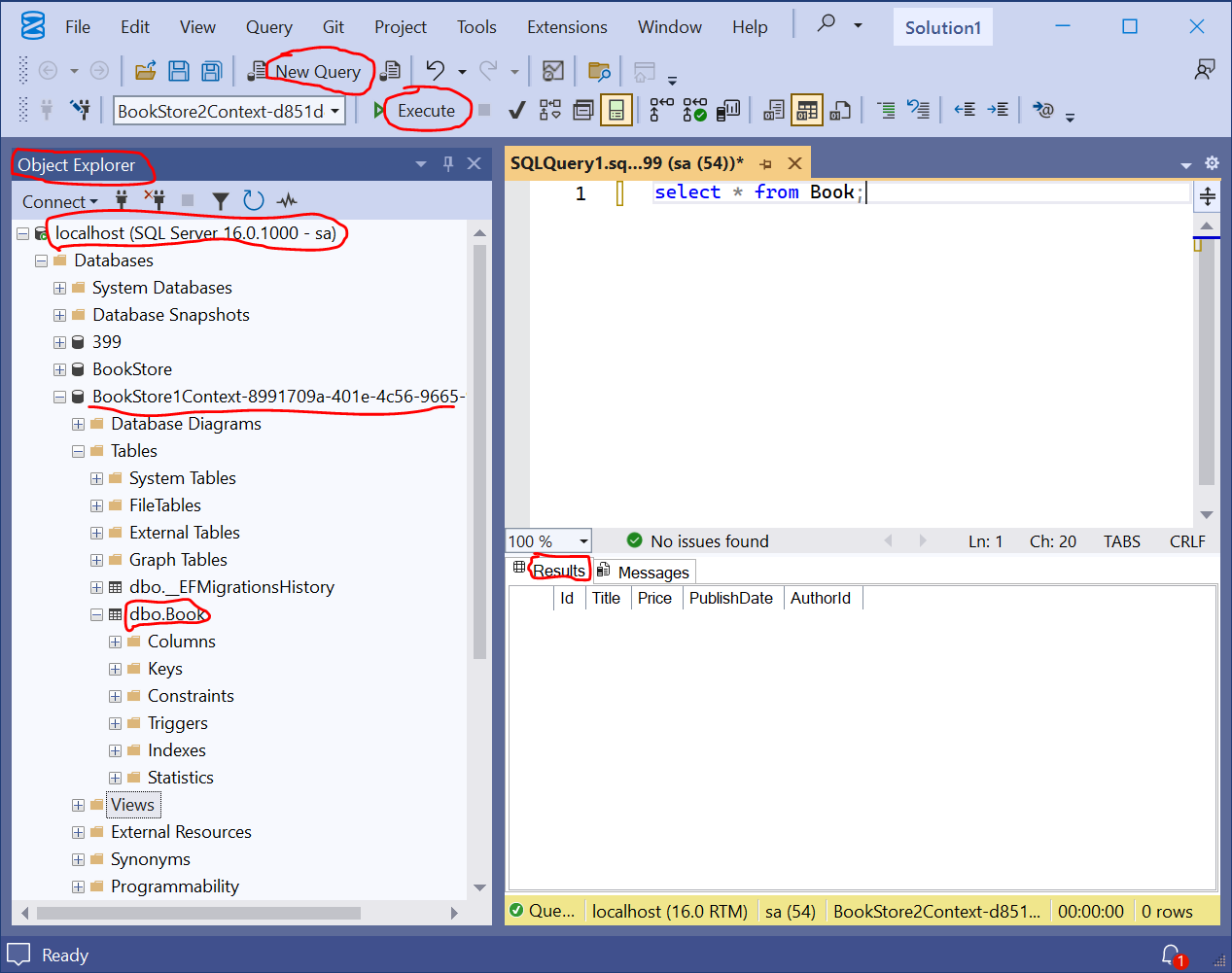For applying the changes to the database, let’s run the following command:
Update-Database

This will update the database based on the data model
Book.cs.
The database includes only one table dbo.Book (dbo means database owner) like:
CREATE TABLE Book (
Id INT PRIMARY KEY,
Title VARCHAR(64),
Genre VARCHAR(32),
Price REAL,
PublishDate DATE );

|
On birthdays during his childhood: “When I was 10 there wasn’t trampolines and cartoon characters, I never went to Chuck E. Cheese! My mom said, ‘You wanna see a mouse, pull the refrigerator out!’” — George Lopez |